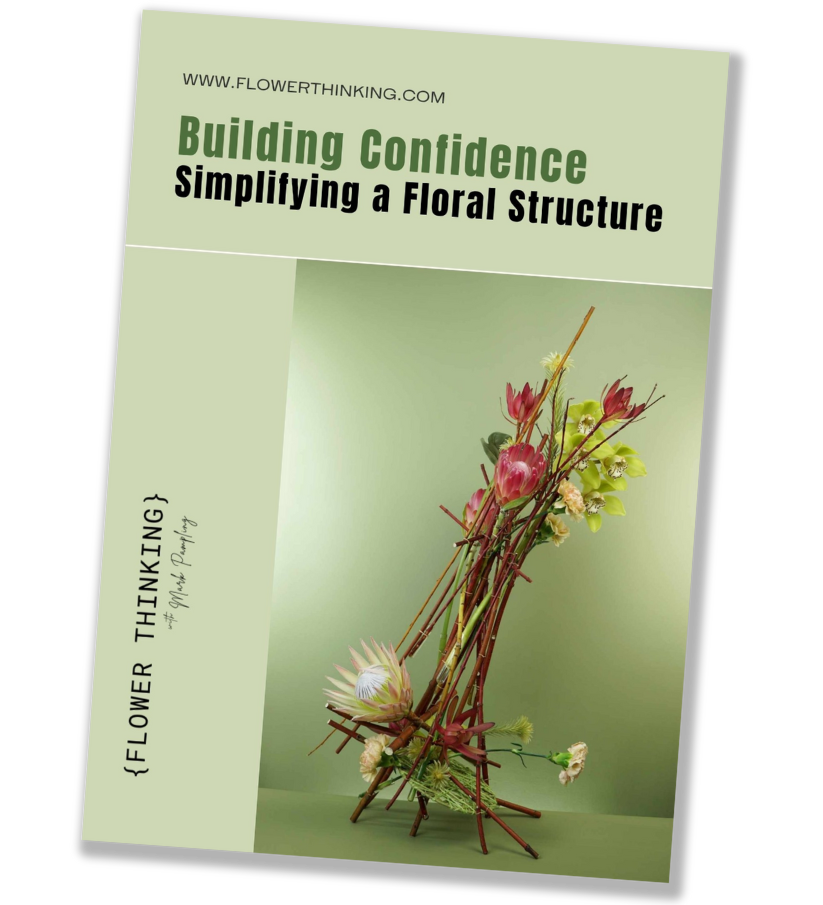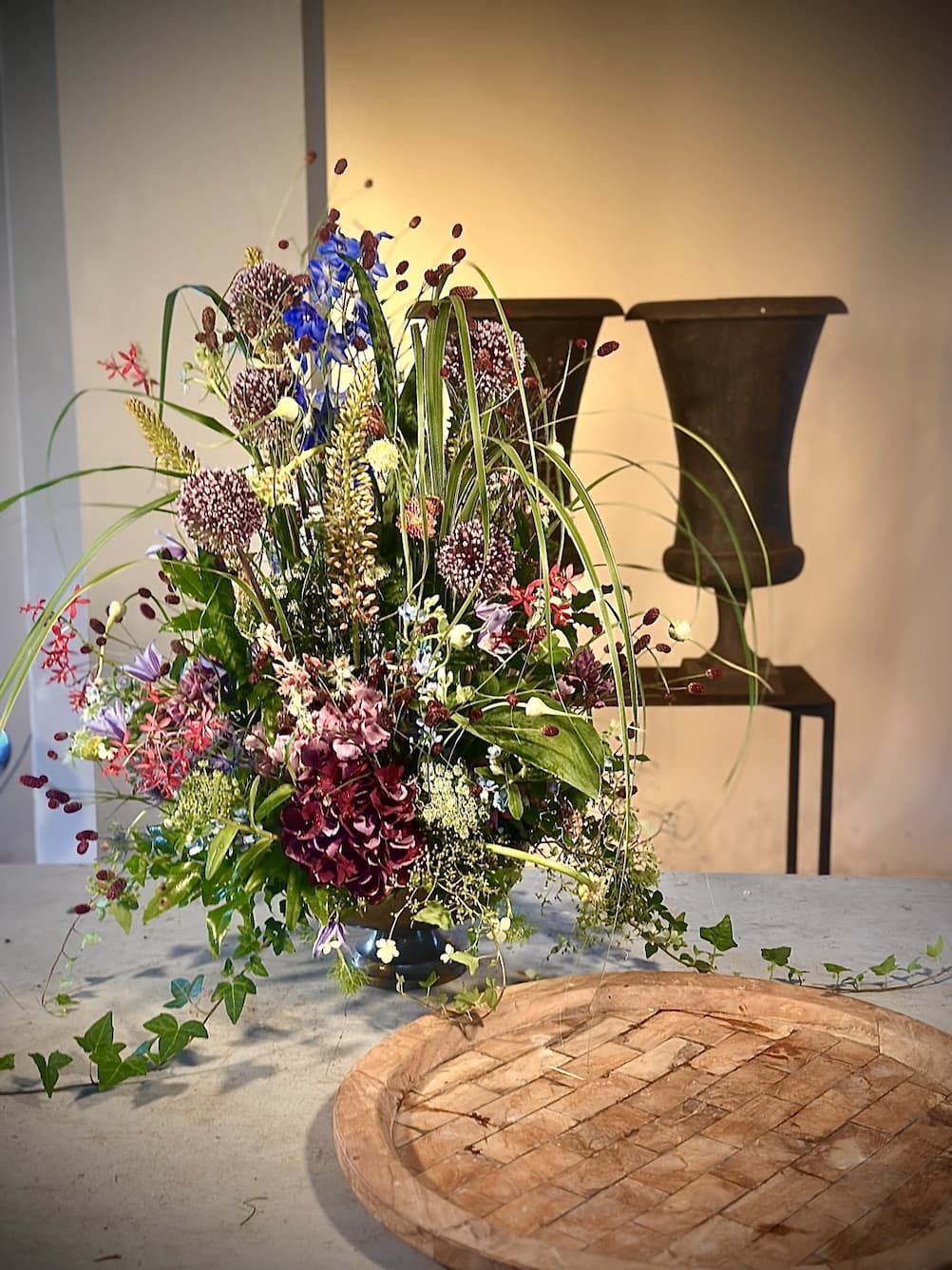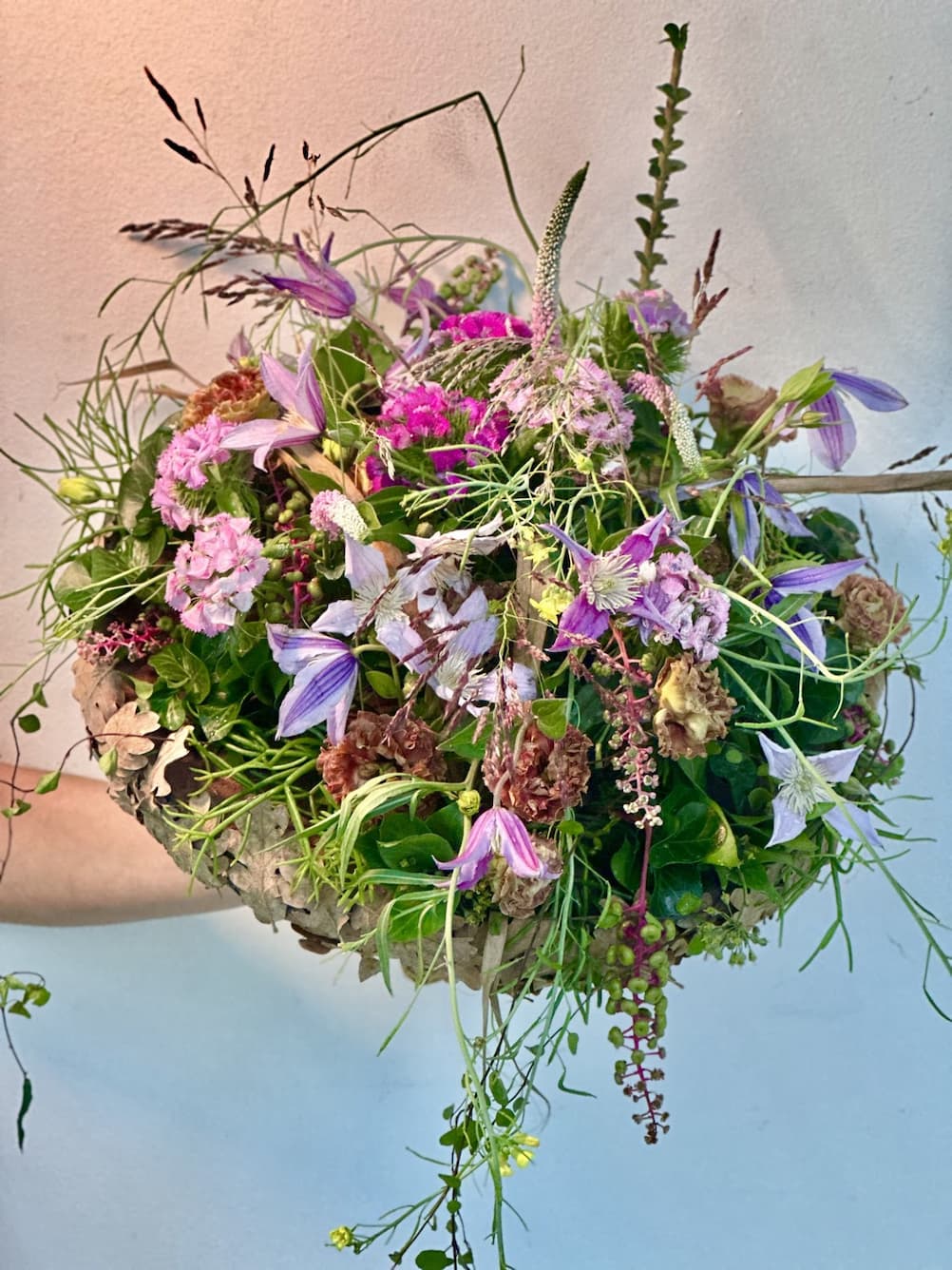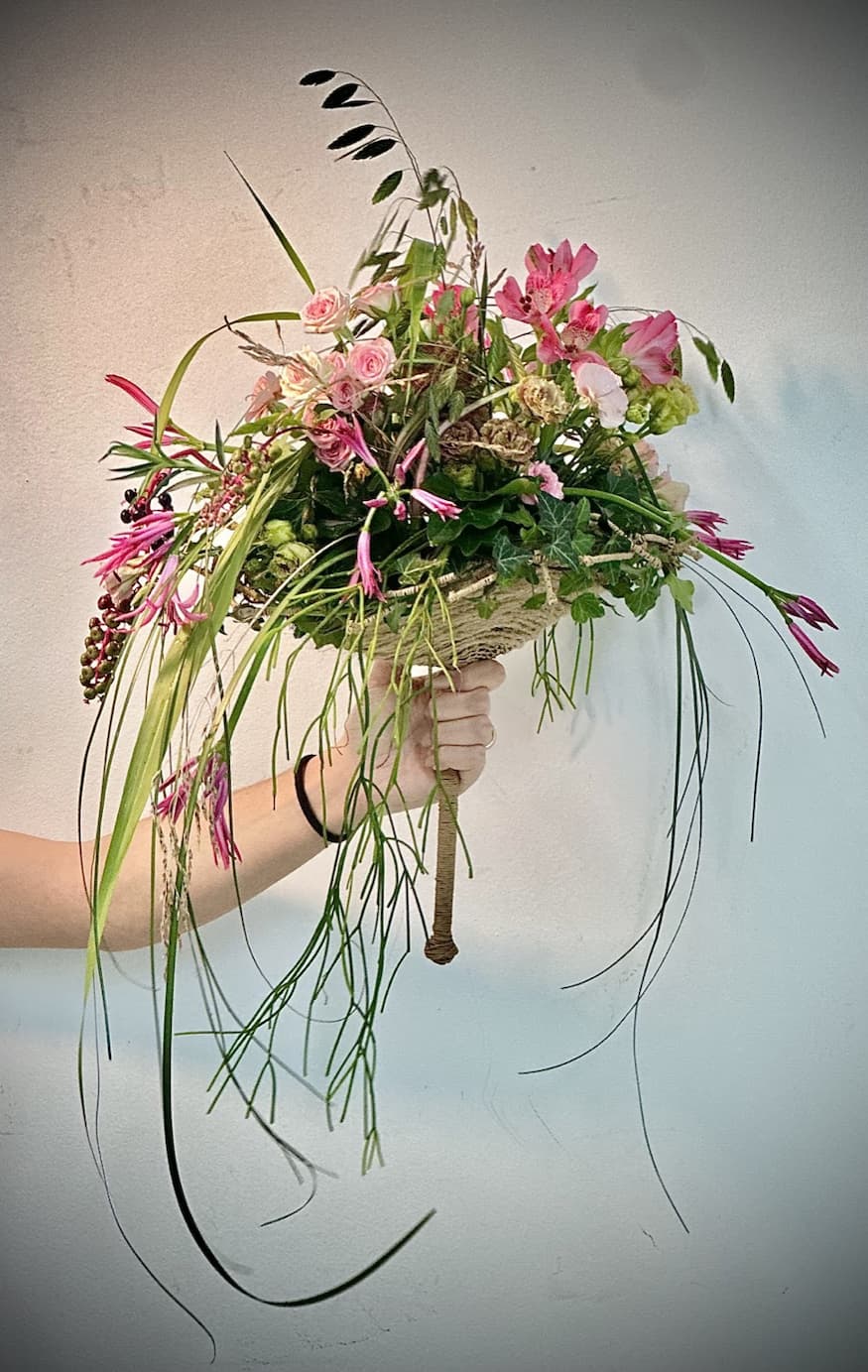Dear Friends,
You begin every creation inspired by one of five key factors:
- Craftsmanship — the “how to do it” factor,
- Methodology — envisioning what you want to create,
- Choosing flowers and materials — deciding what you have and will use,
- Cultural influences, and
- Emotional connection.
Each creator starts with a different one of these inspiring fields. This, to me, is a design process. After the initial spark, how each person moves forward creatively varies widely.
While I trust in this approach, the science of creativity offers many concepts for developing an idea — often starting with imagination even before any practical work begins.
I explore these ideas in my book, “Wellsprings of Inspiration”. Although it’s currently sold out, it answers a simple but essential question: “How do I create an idea?”
When asked, “Where do you get your ideas from?” you need a clear concept. Mine is based on these five pillars, detailed above.
Some Pics & Ideas I’d Like to Share
|
|
In our garden area at the studio, outside in the garden and around beautiful places, we regularly create new series of works every month. The headline is “Garden Style,” “Country Style” — sometimes more like “New Romance.”
This picture has not been published before… it feels very summery.
|
|
A picture from a shooting — filming.
But what happens behind the scenes?
It all starts quite early, and I’d like to share a little bit of that with you.
This basket is entirely handmade. It took a couple of hours to complete.
Inside, there is wire; outside, it’s all natural, plant-based materials.
The color combination is a bit naive — blue, red, green, yellow, and green again.
But that’s only the surface of the decision level. As a creator or author, an individual has a much deeper layer when beginning a process.
|
|
In the relatively small bouquet, we see a rich variety of flowers — as if gathered from a lush garden.
They seem guided by a playful dream, like walking slowly through the flower beds.
The teaching for this is not easy to explain in words. Demonstration works better, because the flowers and greens move so spontaneously in all directions and heights — like a well-mixed, summery meadow.
Don’t fear a bent stem or a hanging grass in the middle of the work; it adds character.
It may look a little undone — much like some hairstyles you see from creative hairdressers. Perhaps we’ll study this in our one-hour monthly Patreon class.
|
|
Garden Style – Bridal Bouquet.
The sphagnum moss technique — natural stems set in a moss-wrapped handle, secured with fine wires.
|
|
here are two classes, each lasting two days, held in the western part of Poland. Many people from different regions are booked to attend.
We will explore new areas of floristry:
- Hand-tied bouquets as design pieces for interiors, and
- Linking and connecting work concepts with diverse examples.
Each class accommodates 20 participants. We provide a wide selection of beautiful and interesting flowers, supplied by Decorum and other partners. Warja Abrasimova is the international organizer. We will also use special natural materials from Silesia, Poland. Demonstrations play a crucial role in the class, as there is much to share.
The tutor is Gregor H. Lersch.
|
|
Excerpted from Issue 17/2025 of Gregor Lersch's Newsletter, with permission.
© copyright 2025 Gregor Lersch
|
|
|
|
|










